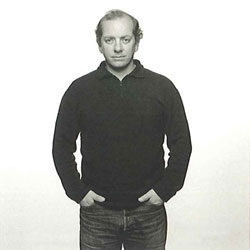Miguel Palma
Miguel Palma Lisboa ¶ 1964
 |
|
| Créditos fotográficos / Photographic credits: Abílio Leitão |
He works and lives in Sintra, and has been exhibiting regularly since 1988. Mostly installations, his work is inscribed in the tradition of re-appropriation that strongly branded the 90s. The goal thereof was proportionately opposite to the progressive alienation carried out by contemporary production processes. In many of his works, one will realize an almost childlike awe with "doing", also noticeable in the wonderment for materials and for the do-it-yourself poise. Related to these notions, Palma more often than not produces scale models. To him miniaturization and modelling are part of the re-appropriation pulse, charged with a metonymic temperament. Actually, that is the compulsory condition for the existence of a model, the cornerstone of a scientific approach and of the experimental method, on which the author bases his own mode of production. ¶ Miguel Palma discloses an awkwardly uninhabited world, in which the machinic or the systematic are all-pervading and self-sufficient: human involvement is utterly stamped out. One just has to consider a few of his works, from Engenho (Engine, 1993), a craftsmanship car that can be driven through great distances, as the artist himself revealed in its inauguration journey, to Carbono 14 (Carbon 14, 1994), an archaeological section-cut model that displays several pieces of equipment from our own civilization as if buried under consecutive rock strata. This is revisiting that most modern of phantasms, which has not ceased to haunt us: the "bachelor machine". In truth, it is not a machine, but rather a figuration of the inhuman as existential closure. Miguel Palma's installations clear a line of vision to this distressing tension between the materials' burden, the density of things and the automatization of purposes. The work Secretária Ilustrada (The Illustrated Desk, 2003), a desk in whose writing surface a mini-landscape was inserted, acts as the witness of the aforementioned tension, in this particular case disguised as the strain between bureaucracy and the Romantic allure. In 2005 he developed Projecto Ariete, a road trip through Europe and its main museums in a vehicle altered by the artist.
http://cvc.instituto-camoes.pt/biografias-en/miguel-palma-7927-dp2.html#sigFreeIdcda0ab8ba7


